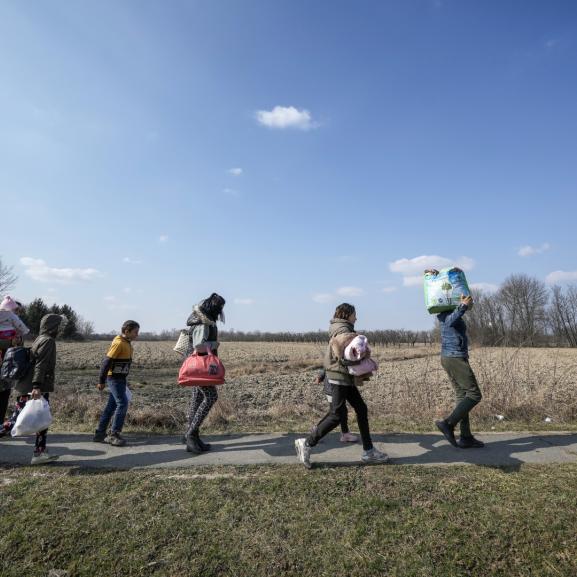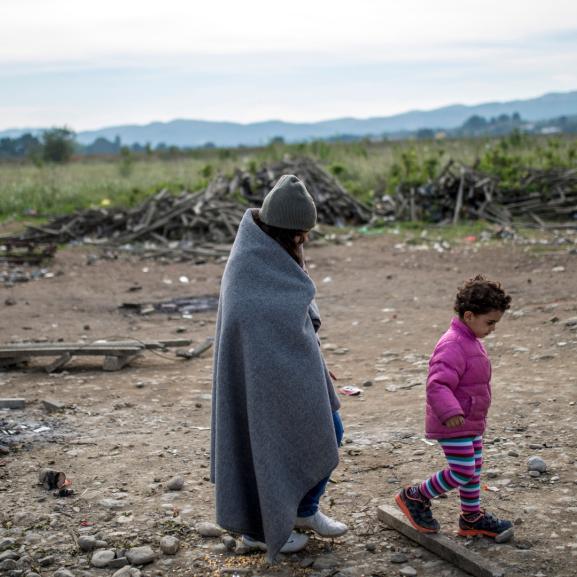FFT exposes excessive force against failed asylum seekers
Concern has been raised by human rights and refugee NGOs, immigration detainee visitor groups and legal practitioners about allegations that excessive force has been employed during attempts to deport immigration detainees from the UK, and that injuries have resulted. In response to what appeared to be growing anecdotal evidence, the Medical Foundation for the Care of Victims of Torture undertook to document cases where the detainee was claiming excessive force, and reporting injury as a result of that force. 14 detainees were examined over a period of 15 weeks. The medical data reveals worrying patterns of apparent abuse; these findings are presented along with an overview of the applicable human rights standards and the criminal and civil law implications of abuse of state detainees.
The medical data was analysed with the understanding that some degree of force or restraint will almost inevitably be used during some removal attempts. Any recourse to force should be limited to that which is strictly necessary under the circumstances, and which is consistent with principles of proportionality, safety and dignity. The evidence in the study, however, reveals several patterns of ill treatment which recur as themes in many of the cases; although the sample is small the repetitive nature of the data forces consideration that there may be systemic problems in the company or companies concerned, rather than merely isolated incidents.
Some methods of described force are in themselves concerning, both in terms of injury risk and in terms of justifiability under the circumstances. These include restrictive positioning with chest and/or neck compression, punches directed at the head and face, and kicks to the abdomen, chest and face.
Also reported was an apparent misuse of restraint or force methods which in themselves would not normally give cause for concern, but which seem to have been used inappropriately, including the continuation of force against already restrained individuals. 12 detainees reported being handcuffed - 11 of these cases described improper use. For example, one case claimed that whilst in handcuffs her head was banged against a fire extinguisher (causing a scalp laceration), pressure was applied to the angle of her jaw and that she was slapped, whilst an officer pulled on, and twisted, the handcuffs.
Handcuffing is a known cause of nerve compression injuries at the wrist. The cases in the study where force was reportedly used against the detainee whilst handcuffed (which might cause continued struggling), or where leverage was applied to the arms whilst in handcuffs, are highly relevant given that 33.3% of our sample exhibited signs and symptoms of nerve damage. Such injury can persist for months or even years. The sample is too small to allow confident analysis of this figure, but at first glance it is higher than expected, which supports the allegations of misuse of handcuffs. There were 3 cases of superficial radial nerve injury, 1 median nerve injury and 1 ulnar nerve injury.
Even after abortion of the removal attempt, force was alleged to continue, taking place out of sight of witnesses inside security company vehicles. Some of the descriptions recorded make clear that this was deliberate: one case claims he was re-handcuffed after being put inside the van, where the officers proceeded to punch and slap him in the face.
Six doctors were involved in visiting detainees. In all cases the examining doctor noted injuries which were supportive of the detainee's account of mechanism of injury. Injuries included nerve damage, possible fracture or soft tissue injury to the base of the thumb, facial bone tenderness, tenderness over the larynx, and laceration of the scalp. Symptoms complained of immediately after the alleged incidents include loss of consciousness, swelling of the knee with pain weight bearing, pain in the jaw and painful bite, bleeding from the mouth, epistaxis and difficulty passing urine.
Apart from physical abuse, verbal abuse was also reported. Some of the described language might be seen to be a consequence of the difficult circumstances surrounding removal attempts (for example, "shut your mouth"), but more disturbing verbal abuse including that of a racial nature was also alleged, which clearly cannot be justified. It is striking that all 14 referrals to the Medical Foundation were black, coming from either Africa or Jamaica and a copy of the report has been sent to the Commission for Racial Equality.
The study does not attempt to provide comment on the availability of medical attention received by the detainees. It is worth noting, however, that medical check-ups following the use of control and restraint or other force are not routine in this context. It is not known whether health care staff in immigration detention facilities are raising concern in cases where injury suggests more than reasonable force, but the ethical arguments for them to do so are strong.
In light of the gathered evidence, it is important that the State conducts meaningful investigation, and introduces effective measures aimed at eradication of abusive practice. Medical examination after the use of any force against detainees should be automatic, training should be given regarding the safe and proper use of handcuffs, the use of certain forms of restraint should be reviewed (such as neck holds), race awareness training should be expanded, and security company vehicles should contain CCTV or equivalent monitoring.






